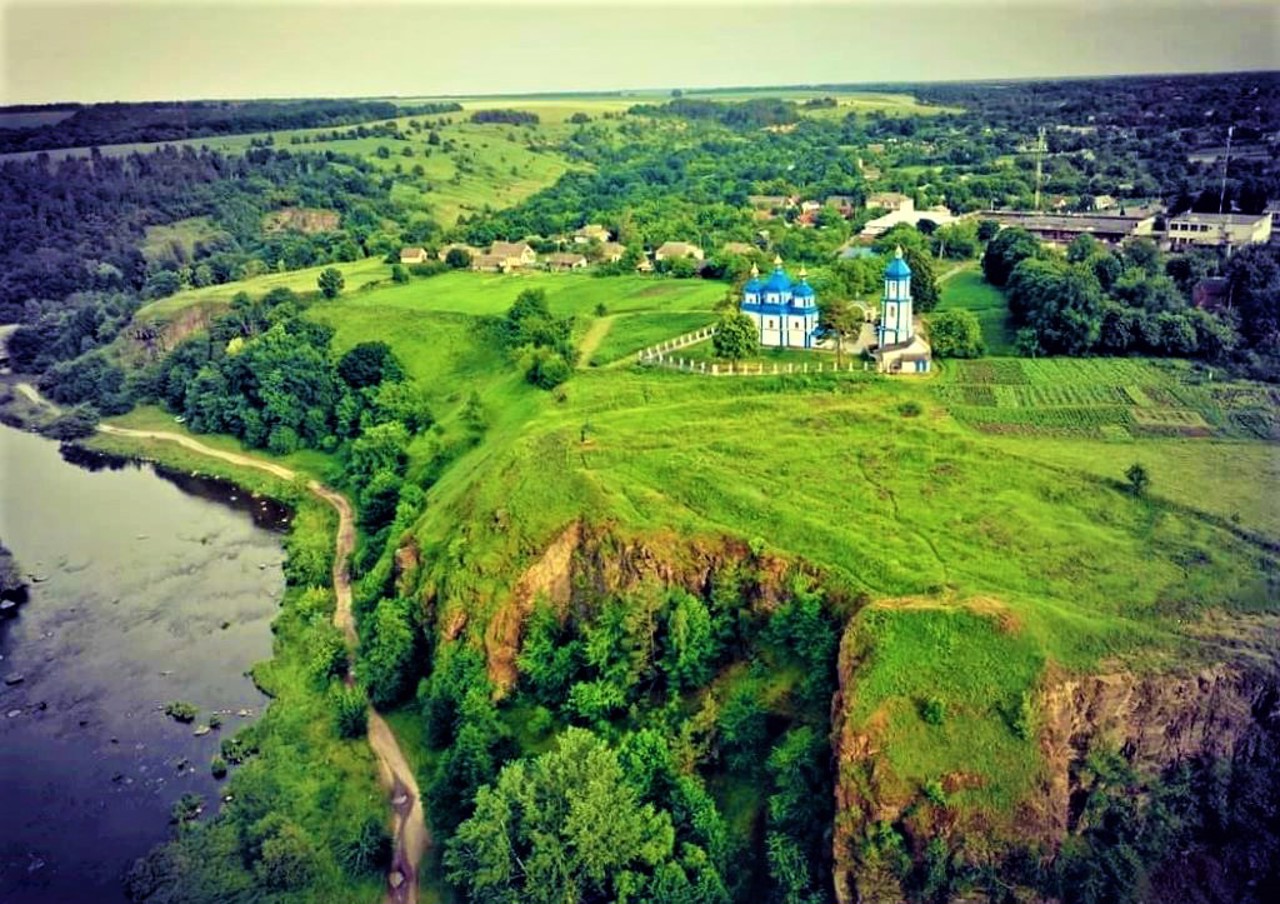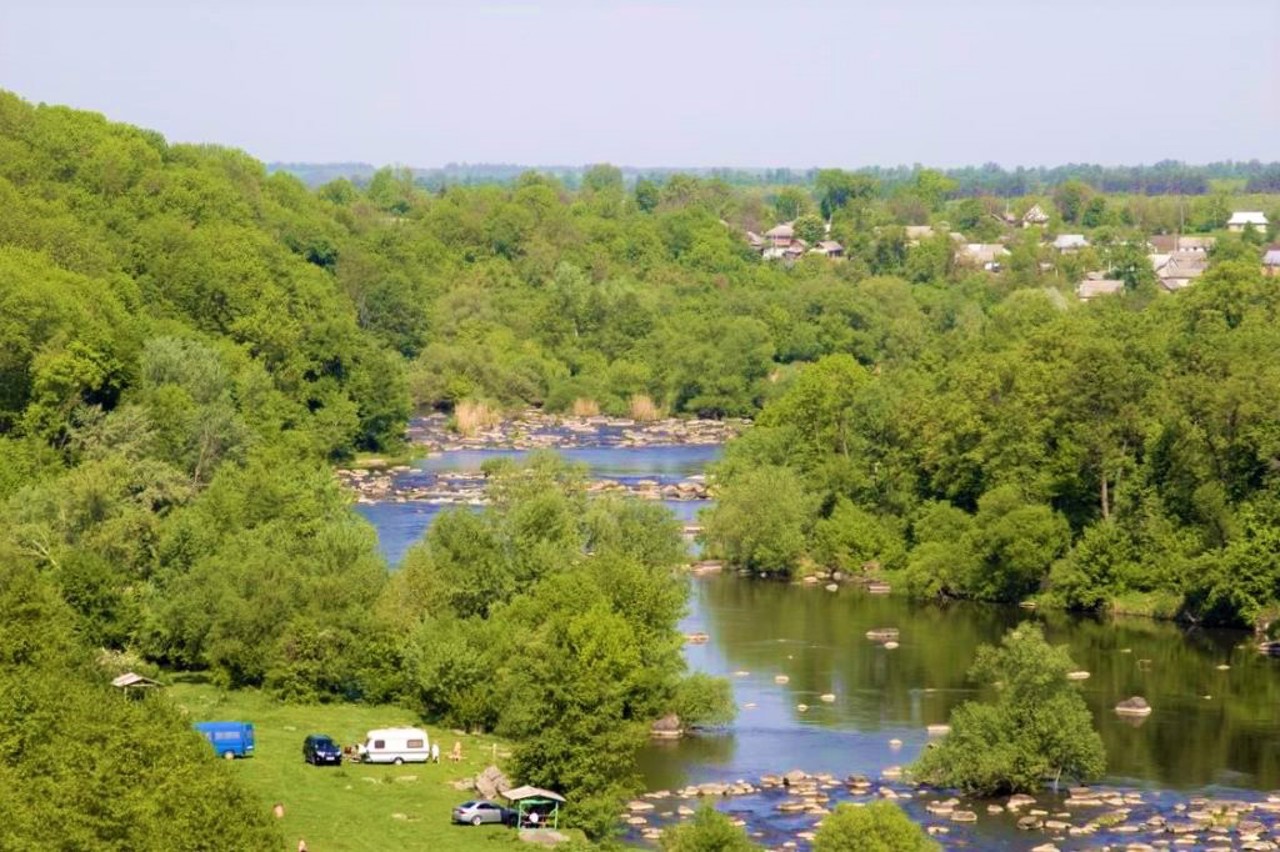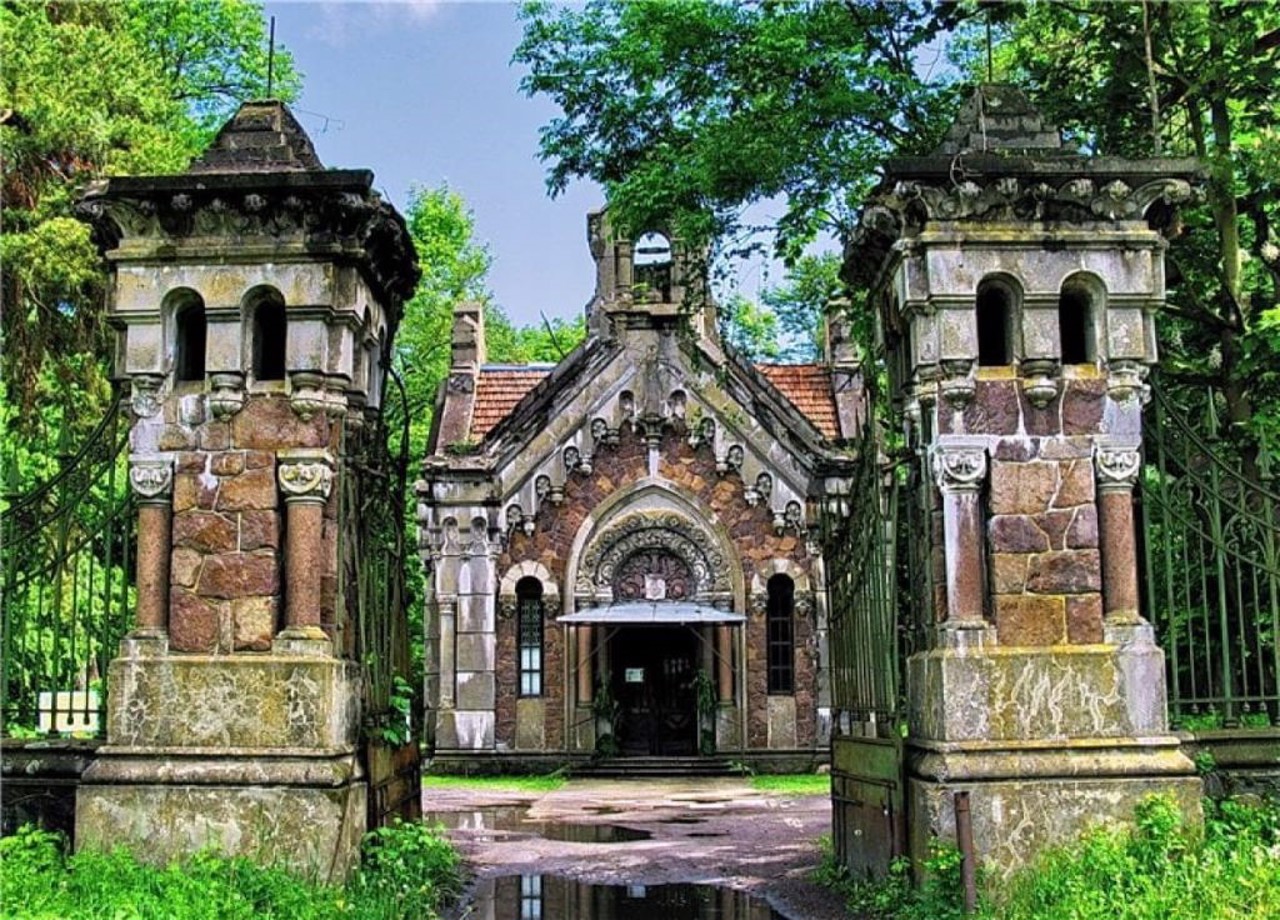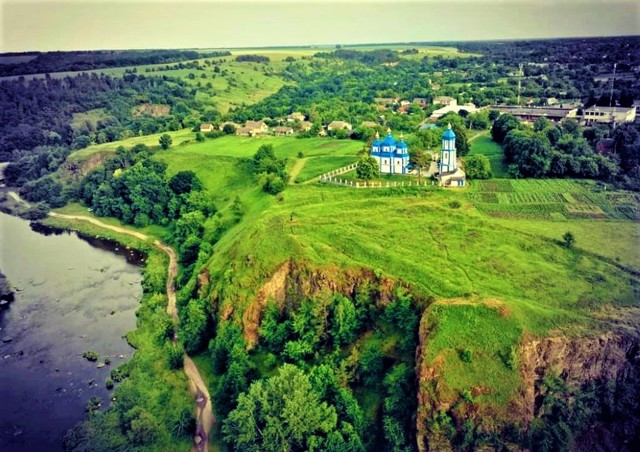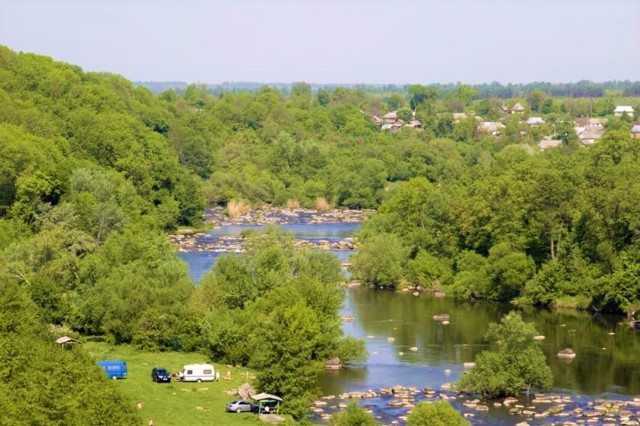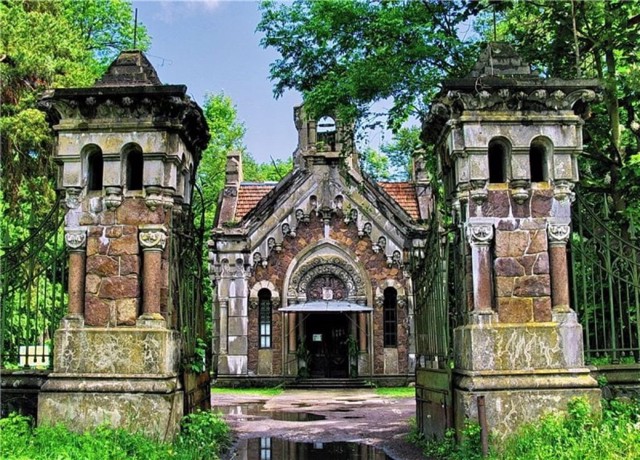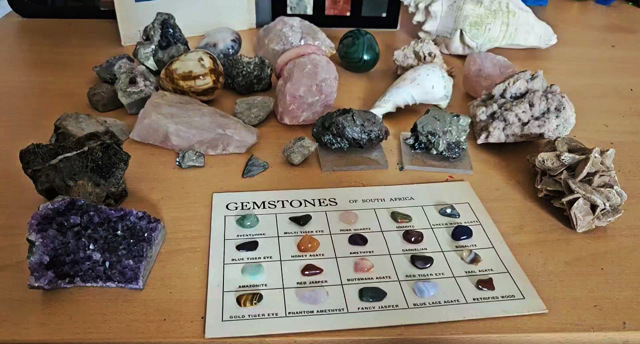Functional temporarily unavailable
General information about Pechera
The village of Pechera is located on the high right bank of one of the most picturesque sections of the South Buh River, opposite the village of Sokilets. The name comes from the cave passages, which served the first inhabitants as a shelter during the attack of enemies.
Since the 16th century, it belonged to the Polish magnates Zbarazki. In 1682, Moldavian voivode Gheorghe Duka, who received Right Bank Ukraine as a gift from the Turkish sultan, settled here. After the new ruler Yuriy Khmelnytskyi moved the residence to Nemyriv, the Pechera Castle fell into disrepair and was soon dismantled for the construction of the foundation and fence of the Church of the Nativity of the Virgin, which is now clearly visib ...
The village of Pechera is located on the high right bank of one of the most picturesque sections of the South Buh River, opposite the village of Sokilets. The name comes from the cave passages, which served the first inhabitants as a shelter during the attack of enemies.
Since the 16th century, it belonged to the Polish magnates Zbarazki. In 1682, Moldavian voivode Gheorghe Duka, who received Right Bank Ukraine as a gift from the Turkish sultan, settled here. After the new ruler Yuriy Khmelnytskyi moved the residence to Nemyriv, the Pechera Castle fell into disrepair and was soon dismantled for the construction of the foundation and fence of the Church of the Nativity of the Virgin, which is now clearly visible above the river from the highway.
Before the partition of Poland, the village belonged to the Svejkowskis, then it passed to the Potocki. The mausoleum of Counts Potocki-Sveikovsky (1904), built in the neo-Romanesque style according to the project of Vladyslav Horodetskyi, is preserved in the park laid out by the Sveikovskys in the 17th century. In Soviet times, a regional hospital was built on the foundation of the Potocki Palace. The farm buildings of the manor have been preserved.
From the high bank of the Southern Buh, impressive views of the cascade of picturesque rapids open up.
Село Печера розташоване на високому правому березі однієї з наймальовничіших ділянок річки Південний Буг, навпроти села Сокілець. Назва походить від печерних ходів, які служили першим жителям притулком під час нападу ворогів.
З XVI сторіччя належало польським магнатам Збаразьким. В 1682 році тут облаштувався молдавський воєвода Георге Дука, який отримав Правобережну Україну в подарунок від турецього султана. Після того, як новий правитель Юрій Хмельницький переніс резиденцію до Немирова, Печерський замок занепав і незабаром був розібраний для будівництва фундаменту й огорожі церкви Різдва Богородиці, яку зараз добре видно над рікою з траси.
До розділу Польщі село належало Свейковським, потім перейшло до ...
Село Печера розташоване на високому правому березі однієї з наймальовничіших ділянок річки Південний Буг, навпроти села Сокілець. Назва походить від печерних ходів, які служили першим жителям притулком під час нападу ворогів.
З XVI сторіччя належало польським магнатам Збаразьким. В 1682 році тут облаштувався молдавський воєвода Георге Дука, який отримав Правобережну Україну в подарунок від турецього султана. Після того, як новий правитель Юрій Хмельницький переніс резиденцію до Немирова, Печерський замок занепав і незабаром був розібраний для будівництва фундаменту й огорожі церкви Різдва Богородиці, яку зараз добре видно над рікою з траси.
До розділу Польщі село належало Свейковським, потім перейшло до Потоцьких. В закладеному в XVII столітті Свейковськими парку зберігся мавзолей графів Потоцьких-Свейковських (1904 рік), побудований в неороманському стилі за проєктом Владислава Городецького. На фундаменті палацу Потоцьких в радянські часи була споруджена обласна лікарня. Збереглися господарські будівлі садиби.
З високого берега Південного Бугу відкриваються вражаючі види на каскад мальовничих порогів.
Сплануй своє перебування у Pechera
What to see and where to go in Pechera
Tourist attractions and museums of Pechera
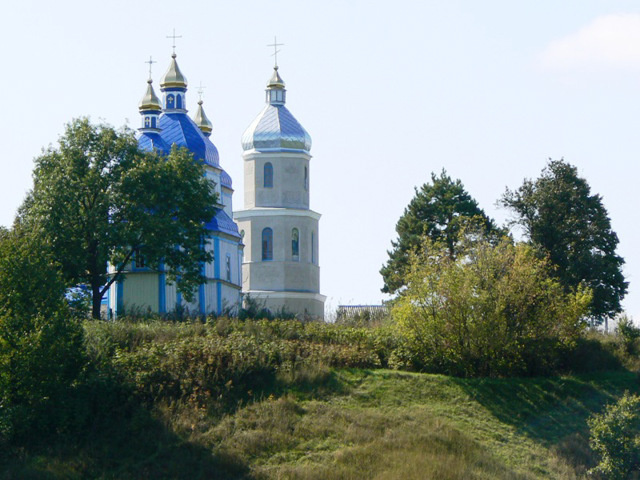
Nativity of Blessed Virgin
Temple , Architecture
The wooden church of the Nativity of the Blessed Virgin, perched on a high mountain above the Pivdenny Buh, welcomes everyone who enters the Pechera from the Nemyriv side.
It is located on a large, strategically advantageous plateau, under which are hidden the ancient caves that gave the village its name. It was here, on the site of an ancient Rus settlement, that in the 17th century, the Moldavian lord Duka, who was appointed by the Turkish sultan as the ruler of Right Bank Ukraine, built his castle in the 17th century. After the expulsion of Duka, who was famous for cruelty, from Ukraine in 1764, the castle was dismantled into building materials, which were used to build the foundation and fence of the Church of the Nativity of the Virgin. The later belfry was probably built on the base of one of the defensive towers.
From the plateau in front of the church, a breathtaking panorama of the Pivdenny Buh valley with a cascade of rapids opens.

Potocki Estate
Temple , Architecture , Park / garden
A luxurious park on the banks of the Pivdenny Buh, several farm buildings and a mausoleum-tomb - all that remains of the once rich estate of the Potocki-Sveykivski in Pechera.
The park was founded at the end of the 17th century by the Moldavian voivode Heorhiy Duka, who owned Right Bank Ukraine at that time. His castle was not preserved, but later the new owners, the Potocki-Sveykivski family, took up the expansion of the park and the construction of a new palace.
The original rectangular layout of the park with a majestic four-row linden alley with 250-year-old lindens leading from the main gate to the palace is almost completely preserved. The park descends in terraces to the river and the baths, it is decorated with stone chaos, grottoes and the only park sculpture that has survived.
On the reverse side of the park is a chapel-mausoleum, built in the neo-Romanesque style according to the project of the architect Vladyslav Horodetskyi in 1904 by order of Kostyantyn and Yanyna Potocki. In Soviet times, it was used as a cinema. Today it is the church of Saint Andriy.
Several farm buildings, designed at the beginning of the 20th century by Yan Hoyrikh, have also been preserved.
The Potocki Palace was dismantled in the 1920s, and the Regional Rehabilitation Hospital was built on its foundation, which is still functioning (the "Pechera" sanatorium). The possibility of creating a tourist complex on the basis of the manor is under consideration.
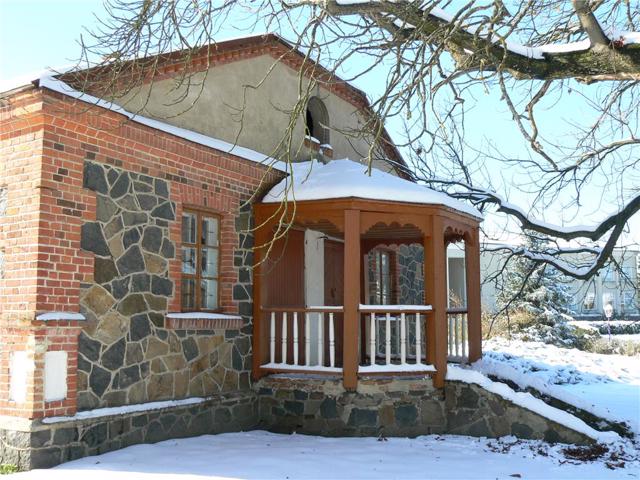
Pechera Local Lore Museum
Museum / gallery
Local Lore museum in the village Pechera in Vinnytsia region operates at the Pechera general secondary education institution of grades I-III (secondary school).
It is located in a one-story building next to the school, in which, during the time of the Potocki family, Kapellmeister Nadvorsky, who led the local brass band, lived.
The school museum was created in 1986, many exhibits were found during the expeditions of the school archeological group. In particular, ancient things related to the history of the Potocki manor in Pechera are presented.
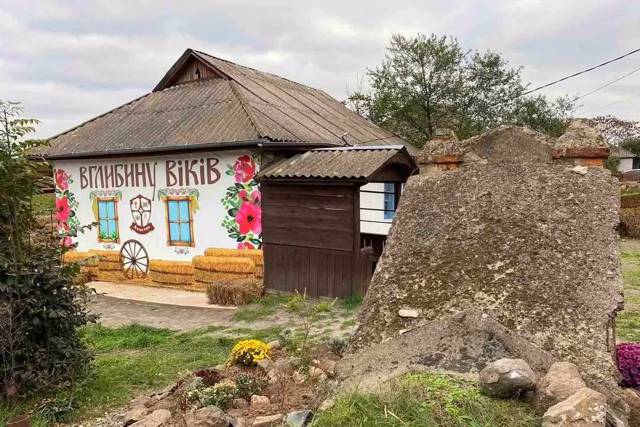
Rocks and Minerals Museum
Museum / gallery , Entertainment / leisure
The underground museum rocks and minerals was opened in 2025 in the village of Pechera, Vinnytsia region, on the territory of the Dunstan Pechera Center (a branch of the Dunstan Crafts Center near Stadnytsia). The exhibition was housed in a stone building of an authentic rural house from the beginning of the 20th century.
The museum displays over 130 minerals and rocks. Among the exhibits are rare minerals (purpurite, sinkankasite, painite), amonites, meteorites, burshtin and hostile collections of girsky crystals.
The Rocks and Minerals Museum near Pechera has become one of the locations of the new quest-mandrivka “Into the depths of the centuries”, which is presented to students by the Dunstan Pechera Center.
Pechera in news and blogs
Reviews Pechera
Geographical information about Pechera
| {{itemKey}} | {{itemValue}} |
|---|---|
| Region |
Vinnytsia |
